- News
- Reviews
- Bikes
- Components
- Bar tape & grips
- Bottom brackets
- Brake & gear cables
- Brake & STI levers
- Brake pads & spares
- Brakes
- Cassettes & freewheels
- Chains
- Chainsets & chainrings
- Derailleurs - front
- Derailleurs - rear
- Forks
- Gear levers & shifters
- Groupsets
- Handlebars & extensions
- Headsets
- Hubs
- Inner tubes
- Pedals
- Quick releases & skewers
- Saddles
- Seatposts
- Stems
- Wheels
- Tyres
- Tubeless valves
- Accessories
- Accessories - misc
- Computer mounts
- Bags
- Bar ends
- Bike bags & cases
- Bottle cages
- Bottles
- Cameras
- Car racks
- Child seats
- Computers
- Glasses
- GPS units
- Helmets
- Lights - front
- Lights - rear
- Lights - sets
- Locks
- Mirrors
- Mudguards
- Racks
- Pumps & CO2 inflators
- Puncture kits
- Reflectives
- Smart watches
- Stands and racks
- Trailers
- Clothing
- Health, fitness and nutrition
- Tools and workshop
- Miscellaneous
- Buyers Guides
- Features
- Forum
- Recommends
- Podcast
feature
125 years of Mavic: A ride through cycling history
Mavic is almost as old as the bicycle as we know it. We’re in France to celebrate their 125th birthday with a journey back in time through some of the innovations and legendary moments that got them to the present day, at an anniversary event by the side of the river in Lyon, where the company has been based since its creation.

It's a cosy affair with an unusually high concentration of legendary names from the sport's past and present, some of whom I immediately recognise even in normal clothes, which means they must be really famous. We settle into bar stools around the central stage and we're treated to a journey through the past and present of the French manufacturer whose name is so intimately connected with the professional peloton.
Mavic's association with cycling back a long way, and our guides for the journey on the night are Tour de France announcer Daniel Mangeas and 1987 Tour winner Stephen Roche (he was one of the ones I recognised). The roots of Mavic are in the late nineteenth century, when Charles Idoux and Lucien Chanel ventured into the spare parts business for the new and expanding bicycle market. Thus, in 1889, was Manufacture d'Articles Vélocipédiques Idoux et Chanel (MAVIC) born.
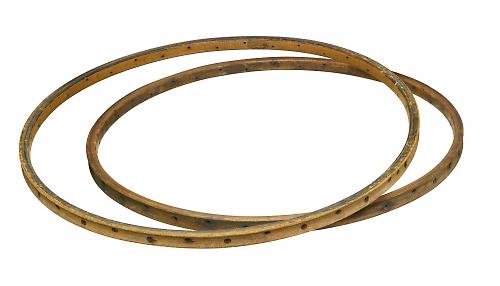
In the early 1930s Mavic were making rims out of wood like everyone else
The company’s first major breakthrough, we learn, came in 1934. Cycling as a sport was already well established and growing when Mavic hit upon the idea of replacing the wooden rims used on road bikes with something else. That something else was Duralumin, an alloy of copper and aluminium, and it allowed Mavic to drop the weight of the rim from 1.2kg to 750g.
The Mavic Dura rim was trialled in secret by 1931 Tour winner Antonin Magne, painted to look like a wooden rim so as not to draw attention to the new design. When Magne came to ride the 28th Tour in 1934 he took the yellow jersey after the second stage and held it all the way to Paris, winning two stages along the way (including the first ever individual time trial) and finishing with a 27-minute lead over second-placed Guiseppe Martano. Alloy rims were to dominate the world of professional cycling for the next 60 years.
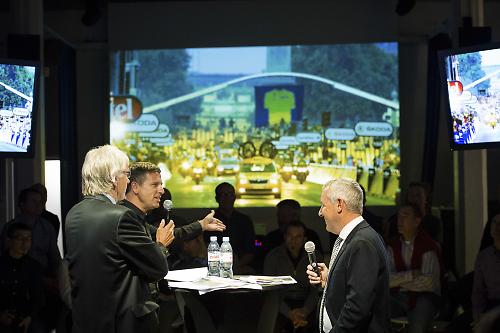
If you're anywhere near my age then even your earliest memories of watching the Tour de France will feature the Mavic Neutral Service vehicles. The service started in 1973 at the Paris-Nice, the year after I was born, the fruit of an idea from the previous year's Dauphiné, when Mavic's then chairman, Bruno Gormand, lent his car to a Directeur Sportif whose own transport had broken down.
There are countless stories of the pros benefiting from the neutral service cars, and it was a real game changer. Bernard Thevenet, twice a Tour winner in the early days of neutral service and a Mavic rider since the early 1960s, remembers it as a "revolution", recalling how in the days before the yellow cars a broken bike was more often than not the end of your race. Current Tour director Christian Prudhomme also heaps praise on neutral service, now such an integral part of racing that it's hard to imagine it without. Amazing, says Prudhomme, that no-one thought of it before. But the best ideas are often like that.
In the 1970s the neutral service team took 30 seconds to change a wheel, but it was too long; the mechanics took to training in the factory yard, and in the 1980s they'd brought the time needed down to 15 seconds for a rear wheel, and 10 for a front. Jacques Corteggiani, director of Mavic neutral support, relives some famous moments for us: changing Stuart O'Grady's wheel at Paris-Roubaix on the way to his 2007 win, and pulling Jan Ullrich out of a ditch in the 2001 Tour after he overcooked a hairpin on the descent of the Peyresourde.
The yellow car came to have a different meaning for professionals too. Laurent Jalabert recalls that before the days of race radio, when you got into a breakaway group you'd always be checking behind for the neutral service car: if it was allowed into the gap then you had a decent lead.
"You got to know the people in the cars," he says. "It wasn't just a case of the car being behind you. You could always ask the car for a bottle of water on a hot stage of the Tour."
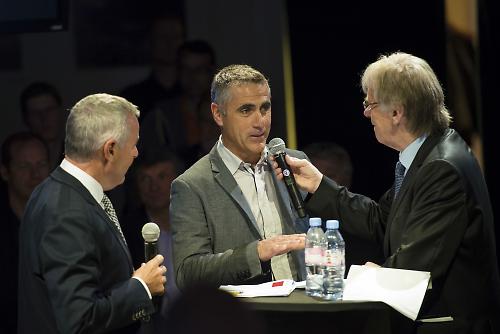
Jalabert also remembers a French National championships on a hilly circuit, when his rear gear cable snapped and left him in the 12-tooth sprocket. He managed two laps but on the third he was suffering.
"I stopped the Mavic car and grabbed a yellow bike off the roof", he says. "In the end I managed to finish eighth, but I'd never have made it to the end on my own bike."
Jens Voigt would famously finish a stage on a tiny Mavic yellow bike from a children's support programme in 2010, twiddling to the finish with his knees round his ears to keep himself in the race.
It's not all pros, either: Mavic have been supporting amateur events with neutral service for almost as long as they have the professional races. The first sportif support was at the Marmotte in 1977, and since then the yellow fleet have been at countless events across the world. One of the team tells of a boy coming to the Mavic stand at the Roc d'Azur mountain bike event in tears with a broken wheel. A spare wheel was found and he went on to win his category; now, every year, he comes back to the stand with a gift to say thank you.
There’s been plenty of other notable firsts in the company’s history. The 1975 Module E hooked rim was designed to work with the Michelin Elan, the first widely-available high pressure clincher tyre. The tyre itself had a reputation for being unreliable, the tube tending to blow through the sidewall at pressures above 90psi, but the rim design set the standard for most modern road wheels outside of the pro peloton.
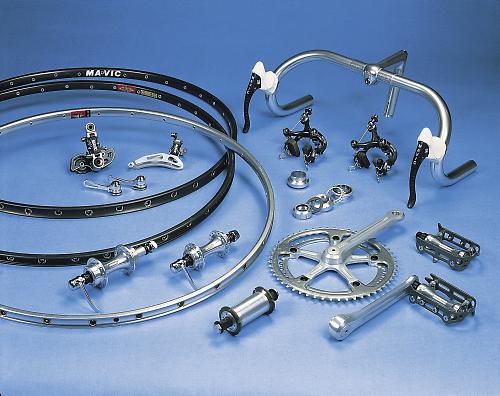
The 1984 Tout Mavic groupset as used by Sean Kelly in his Paris-Roubaix win
1975 also saw the company start anodising alloy rims, and by the end of the 1970s it had developed a full groupset, the Tout Mavic. Sean Kelly would go on to win the 1984 Paris-Roubaix using the groupset and, of course, the rims.
"In the early 80s Mavic was the rim, the product that everyone wanted," says Kelly.
The Mavic groupset went on to even bigger success in 1989, with Greg Lemond scoring a famous eight second victory over Laurent Fignon in the 1989 Tour using the Tout Mavic system.
Mavic were pioneers of aerodynamics during the 1970s, partnering with the Saint-Cyr engineering school and Gitane-Renault to produce the first aero road bike with modified tube profiles, flattened handlebars, deeper-section CXP25 alloy rims and internally-routed cables. Bernard Hinault went on to win the Tour de France in 1979 using the Gitane-Renault aero bike, and winning four of the five (yes, five!) individual time trials in the race that year.

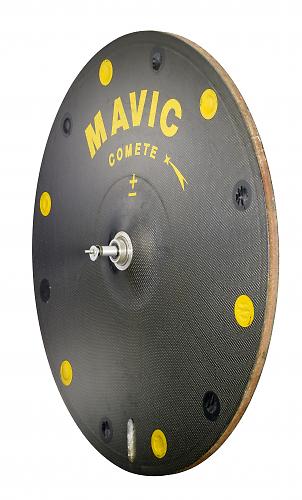
That grounding in aerodynamics translated well to the track. In 1992 Mavic’s tri-spoke 3G wheel and Comete disc wheel adorned Chris Boardman’s bike in his iconic 4km pursuit win at the Barcelona Olympics. Four years later, in Atlanta, the culmination of two years of wind tunnel testing brought the iO five-spoke track wheel. Five medals were won using the iO, and it continues to be used in the highest levels of competition to this day.

The 1990s also saw Mavic trialling electronic shifting with the Once professional team, and that work resulted in the ZMS (Zap Mavic System) which debuted at Eurobike in 1993. Chris Boardman won the prologue of the 1994 Tour de France using the Zap rear derailleur; sadly he's not here to recount that victory but his bike from the day takes pride of place in one of the displays.

Tony Rominger is on hand though.
"I remember the day very well," he says, recounting the penultimate stage on the 1993 Tour de France, an individual time trial. "The team director came to me and said, don't use this bike [with ZMS] because it's not working 100%. But it was important to me. I can't remember if I was third or fourth at the time", he says, at which point a discussion breaks out among the old heads. If ever there was a room to ask that question in, this was it...
"I took the risk", Rominger says. "You can save some seconds with the shifting because you don't have to change your position on the bike. I went on the road for the warm-up and it was working perfectly, but out on the stage after three kilometres I was in 54/12 or 55/12 and it wasn't shifting after that. I was lucky it was flat!"
Rominger still went on to win the time trial that day, and was second overall.
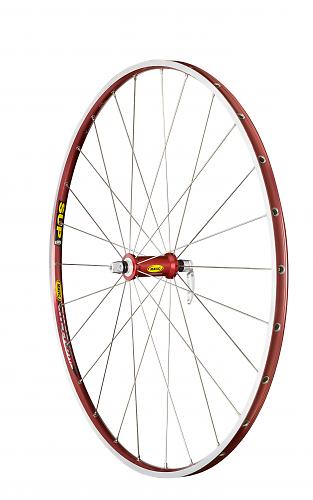
Into the modern era, the Cosmic wheel in 1994 heralded the start of seeing the wheel as a single system, rather than designing the separate components or using off-the-shelf parts. This work led to the Helium of 1996, the climber's wheelset of choice in the latter days of the 20th century, easily recognisable with its red rim and hub. That development work continues to this day, of course. The most recent example on the night is Johan Vansummeren's 2011 Paris-Roubaix win; the towering Belgian is there to reminisce about his first ever attempt at the race on carbon wheels, M40 prototypes that Mavic had developed with Garmin Barracuda.
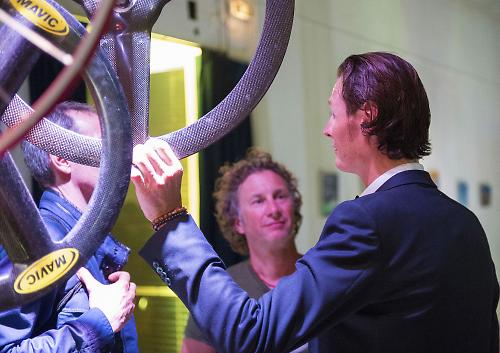
"It was the first time I'd ever ridden with carbon wheels in Paris-Roubaix," Vansummeren says. Although carbon was commonplace in the peloton, the Hell of the North was still dominated by handbuilt alloy wheels.
"Before we'd always gone with a normal aluminium wheel. You immediately feel the difference. When you come off the cobbles you immediately feel the advantage of an aero carbon wheel that's much lighter."
Vansummeren went on to take the victory, despite riding the last three miles with a flat tyre with a charging Cancellara gaining on him. And Mavic's M40 prototype became the Cosmic Carbone 40T that's in the current range, and also signalled carbon's suitability for the cobbles. Just a few years later, deep section carbon rims are completely dominant.
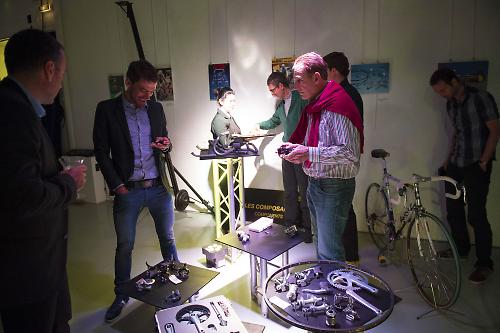
Come the end of the presentation we're left to wander the exhibits, eat canapés and be star-struck by some of the famous types. Here's Boardman's 1994 bike. There's the 1980s groupset, and there's Christophe Riblon looking at it. Here's a crazy plastic rim from the 1970s - was it ever used in anger? There's a waiter with some more canapés.
At dinner we chat about the night, ask Sean Kelly fanboy questions and share Tony Rominger's starter because he had to leave early. All in all, as work dos go, it's a good one.
Dave is a founding father of road.cc, having previously worked on Cycling Plus and What Mountain Bike magazines back in the day. He also writes about e-bikes for our sister publication ebiketips. He's won three mountain bike bog snorkelling World Championships, and races at the back of the third cats.
Latest Comments
- eburtthebike 6 hours 32 min ago
"......disgruntled residents continuing their protests by chaining bicycles the trees,..."...
- Secret_squirrel 6 hours 39 min ago
All competing for a role in a group that has been accused of being involved in massive corruption in the past. Hmm.
- Cycle Happy 7 hours 11 min ago
I've found the Chilli-Tech rear camera /light combo to be very good. ...
- quiff 7 hours 43 min ago
I was intrigued as to what, if any, connection the term has to Mongolia. According to, ahem, Wikipedia, Down himself (namesake of the syndrome)...
- Davisian 8 hours 21 min ago
I don't know why this is in the news, the Merseyside area is peppered with crossings that work like this and have done for decades. Maybe we don't...
- stonojnr 8 hours 32 min ago
at Man Utd its more about managing the bags of wind who used to play the game but now endlessly criticise from the comfy pundit sofa, than anyone...
- wtjs 9 hours 36 min ago
The cyclist told road.cc that he has not reported the near miss to the City of London Police because “what’s the point? They’re not interested...
- chrisonabike 9 hours 53 min ago
Never mind all that now - do people have any opinion on pet-cycling-safety?...
- chrisonabike 10 hours 53 min ago
That's clearly far too large a vehicle to transport pets in urban areas. What about a Ram (perhaps more suited to country types though)?
- Tom_r_k 11 hours 36 sec ago
Brilliant to see a company showing some love to rim brakes. I have been tempted to get some soon so may support a company offering fresh updates...




















Add new comment
2 comments
Good read, thanks.
Had a Mavic groupset in the 80's it was awesome. Shame they didn't carry on with group sets.